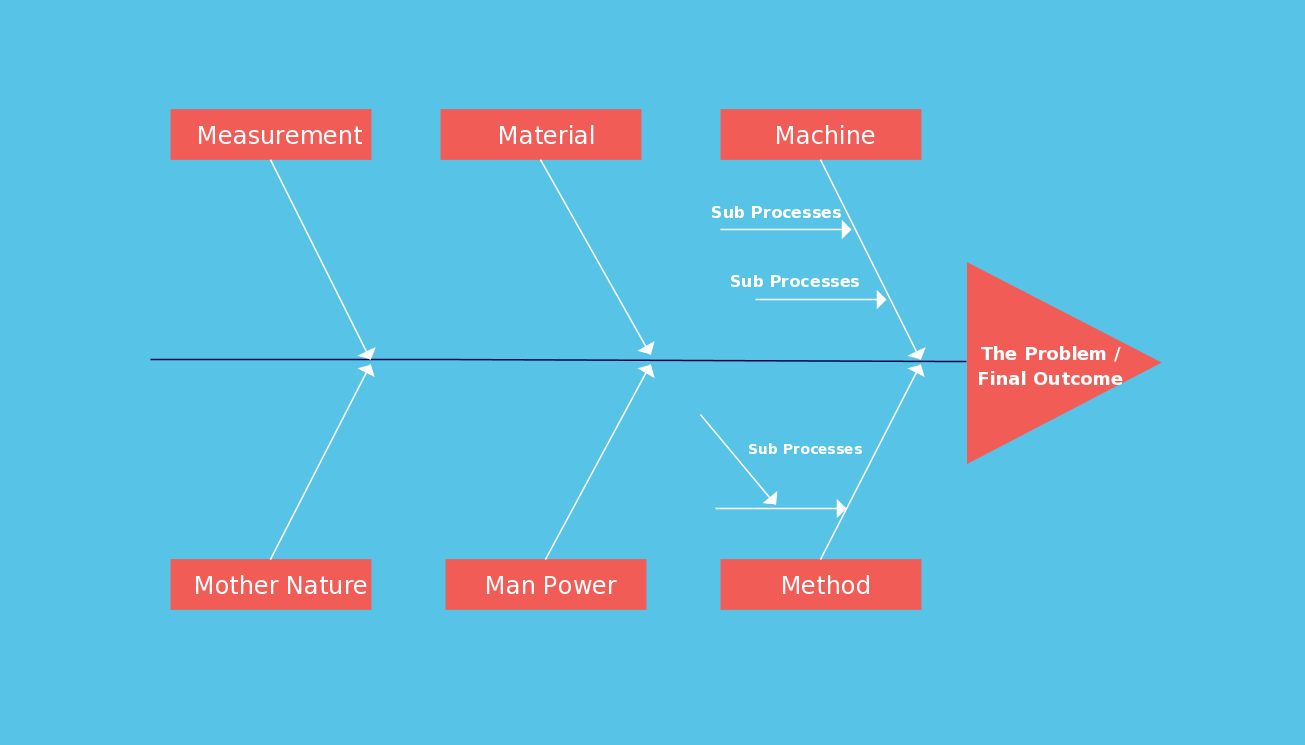

Performing ishikawa (especially in the beginning of a problem) is a bad habit of quality teams, putting a bunch of potential root causes into the fish-bone and burning money and time to porve them.The "Measurement" cause category also should not be in the fish-bone, as we should already know in the D2 (Problem description) whether we have a measurement system error, or a real product problem.Understand the technical root cause(s) first, and only then go deeper to managerial ones (with 5 x why). The "Management" cause category should not even be in the fish-bone, as it is not technical.Big iskikawa = you did not understand your fundamental problem, and your technical "storyline".

Enforces brainstorming instead of structured convergent thinking.More information on the practical application of the Ishikawa diagram is presented during dedicated training courses on the 8D and Kaizen methodology, to which we cordially invite you. Environment – that is the area where the following factors should be considered: temperature, humidity, pressure, lighting, noise, radiationįigure 1.Measurements / Measurement system – in which it’s worth taking into account the incorrect or distorted indication of the measuring instrument.
ISHIKAWA DIAGRAM MACHINE VS MATERIAL VERIFICATION
Method – refers, among other things, to verification of procedures, instructions, specifications, standards, laws, rules, know-how and technology.Material – here we consider components at the entrance to the production process and semi-finished products that occur in the inter-operational areas (named also as WIP – work in progress).Machine – in this category, we verify all aspects relating to the machine, which include among others, license, durability, modernity, efficiency, precision, safety and working conditions.Man – in this category we verify qualifications, habits, job satisfaction, internship, well-being of the person or employee whose work led to the occurring problem.In the Ishikawa diagram, the most common are six categories that should be considered. Its additional advantage is that it can be used immediately when a problem occurs and where it occurs (often referred to in the automotive industry as “gemba”). Figure 2 shows a close-up of the 'material' and 'machine' branches of the diagram. Various potential root causes would then be listed under each branch. Why are we mentioning this? Because the Ishikawa diagram strengthens teamwork, stimulating creative thinking. Figure 1 depicts a typical Ishikawa diagram with the six branches labeled as material, method, milieu (environment), man (employee), measurement, and machine. Using these as prompts to generate hypotheses for the root cause of a problem. the causes are categorized by the 5 M’s in manufacturing: machine, method, material, man/mind power, and measurement/medium. In the long run, this solution can lead to a reoccurrence of the problem and OEM client escalation. The Fishbone Diagram, also known as the Ishikawa Diagram, is a visual technique for problem-solving invented by Kaoru Ishikawa. We must also remember that group problem-solving is a good practice, eliminating the pathology of the pseudo-one man show strategy. An additional benefit of using the Ishikawa diagram is that it is easy to learn and simple to use. It’s a great tool for the correct verification of the problem root cause, and thus, it determines its effectiveness. A line called the 'spine' or 'backbone' should extend to the left starting from the edge of the main box (if youre using a SmartDraw template, this will. Kaizen methodology – with this approach, is used as 4M (Man, Machine, Method, Material) or 4M + 1D (Design) To begin making a cause and effect diagram, write the main issue or problem to be analyzed in a box that is typically on the right edge of the page, halfway down the drawing area or page.8D reports in step D4 – root cause analysis.

Most often, we can deal with it when using: Usually it’s used in the quality area, but it can also be successfully carried out in logistic, health and safety (ergonomics, accidents at work, etc.) and production analysis. Ishikawa Diagram, also known as the “fishbone”, is a qualitative tool that is often used during problem solving by the production plant.


 0 kommentar(er)
0 kommentar(er)
